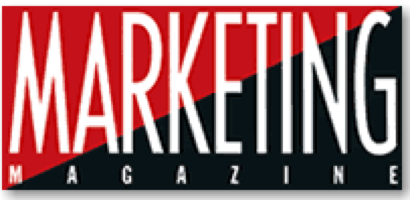Front of the line
Newspapers are working hard to treat advertisers like VIPs without abandoning editorial integrity.
Marketing Magazine, April 20, 1998
Newspapers have roared back from the brink of doom at which they were tottering a decade ago. As the 1980s ended, every pundit on the planet offered the certainty that print was an archaic medium, and that newspapers were the most hopelessly antiquated of all — sure to be supplanted by vague and unspecified electronic wonders.
Wrong. Newspapers are growing. There’s been some industry consolidation, but the papers that survived the recessions of the 1980s and 1990s are, for the most part, posting profits. The longer outlook is promising, too. Why else would Hollinger Inc. and its division Southam Inc., both of Toronto, be willing to lose up to $130 million before they project their national daily will break even after five to seven years?
Newspapers’ resurgence has meant new territory for the traditional daily, covering the day’s main stories in greater depth than its electronic counterparts can, as well as offering analysis and a broader range of subjects.
There have been changes in the possibilities for advertising, too. And the most fundamental is happening right now, as dailies alter their basic structures to lower the once-sacrosanct church/state wall between advertising and editorial departments. The most dramatic example in the last year has been the Los Angeles Times, which has put together teams of people from both advertising and editorial to devise approaches and ideas that serve the interests of both camps, giving readers more value for their money and advertisers more bang for their buck.
That change hasn’t been without controversy. Some decry the LA Times model as a prescription for selling out. But that’s a minority view. Increasingly, newspapers know that advertising is what keeps them alive, and managing to cater to advertisers while maintaining editorial standards is a tricky but necessary balancing act.
“Over the last couple of years, we’ve been working very hard at all of our newspapers between the business side of the paper and the editorial side to open the gates to conversation and understanding,” says Gordon Fisher, Southam’s vice-president, editorial.
It hasn’t always been that way. Until just a few years ago, the concerns of advertising and editorial only collided occasionally. And even then, it was a matter for the publisher. Editorial people viewed the advertising staff as money-grubbing whores. Advertising people viewed the editorial types as ink-stained prima donnas, too caught up in romantic notions of their own importance to countenance undeniable realities — no ads, no paper, to name one.
“The old church-and-state used to exist in a number of ways,” Fisher says. “Not only did editorial not talk to advertising people, but the editorial page people wouldn’t talk to the news people. There were walls all over the place; people prided themselves on not talking to each other. Those kinds of walls have been blown away in all of our operations. They just don’t exist anymore.”
Still, says Fisher, “there are principles of journalism that journalists are proud of, mindful of and should be. The best thing to tell an advertiser is that you have an audience that trusts the newspaper for its credibility and its authority and its truthfulness. I don’t think there is any benefit to advertisers if the readership believes that advertisers have a pipeline to the news columns of the newspaper. It’s in the interests of advertisers and the newspaper to maintain that kind of credibility. But it is also in the interests of readers and of the newspaper for cooperation to take place where it works in the interests of advertisers and readers.”
Two examples Fisher cites are New Homes and Automotive sections. A New Homes section seems, on its face, to make complete sense. Here’s a chance to provide readers seeking a place to live with vital reporting on real estate and its attendant financial details. That kind of content delivers an audience primed for ads from lenders, builders and real estate agents.
Fisher says when he was managing editor at the Vancouver Sun, it didn’t have a New Homes section. “There was a lot of discussion about the need for one,” he says. “But do you do it through advertorial and control the content and probably end up with not quite as good a section? Or do you involve the editorial folks and the advertising folks and go to the customer together and say, ‘What are your needs?’ and then, thinking of the readers, put together a package that serves both advertisers and readers? That’s been done very successfully in a lot of ways, and there are huge homes sections now — not only in Vancouver but in many other markets. That kind of collaboration in the interests of the business goes on all the time.”
Both Fisher and Toronto Star marketing VP Jeffrey Shearer point to automotive sections as another prime example. In their infancy, many auto sections were put together by advertising folks. Editorial types figured such work was beneath their dignity. It might be necessary and make money for the paper, but they didn’t have to like it, and they sure as hell weren’t going to work on such a thing.
But as car sections became bigger, journalists stepped in. There were opportunities for reporting. And the more stringent journalistic work meant the sections were more respected. That, in turn, made them better ad vehicles.
That strategy reached a new level with the Toronto Sun’s coverage of the Canadian International Auto Show Feb. 13-22. It focused on a different automaker each day, without any loss of editorial integrity.
“A great example recently was the launch of the Volkswagen Beetle,” says Cossette Media group media manager Sheri Metcalfe. “All the guns were manned at the same time: press releases happened at the same time as the newspaper coverage, the outdoor and everything. That definitely was a success. There was coverage beyond that helped create noise in the marketplace.” But Metcalfe says cooperation between ad and editorial departments hasn’t improved as much as newspaper people like to think it has.
“I used to work at Chiat (TBWA Chiat/Day) on Shoppers Drug Mart,” Metcalfe continues. “There were a lot of discussions about doing regular articles on health and wellness and bringing Shoppers on as a main sponsor. At the time, it was really cost-prohibitive. From an advertiser’s perspective, it’s a great way to move along that relationship continuum with consumers. It gives them that much more credibility, which is great, and it adds dimension to the brand or the product. There are a lot of products — cereal or a soft drink — where there’s not a lot to say.” Looking at these opportunities in newspapers requires case-by-case or product-by-product judgment.
Metcalfe probably couldn’t have approached the Toronto Star with her idea of Shoppers Drug Mart’s serving as a “main sponsor.”
“We don’t believe in sponsored editorial at the Star,” Shearer says matter-of-factly. “Editors and ad people can work together to create better products, but not by compromising either’s standards.”
Nevertheless, advertising and editorial people at the paper have been working more closely together to serve their common interests. A prime example came from the editorial side. The Star’s sports editor approached management with the idea of expanding the paper’s special section of golf coverage into a free-standing magazine.
Co-operation between ad and editorial staff led to this magazine in the Toronto Star.
“Advertising, editorial and production people met as a task force for three months and came up with a business plan,” Shearer says. “We’re publishing our second edition this April — 108 pages. It’s profitable, and we increased the circulation so that it can go to everyone who received that Thursday’s paper.”
Those who decry the greater ad/editorial cooperation as selling out ignore or forget a key fact: if the paper’s editorial integrity slips too far, it’s no longer a worthwhile vehicle. As much as advertisers might want to dictate the agenda and demand preferential placement, too much of that destroys the paper’s value as a worthy place for their advertising, and they know it.
“The fundamental interest that I have is intruding on the lives of the readers and delivering a message,” says The Media Company’s managing partner Doug Checkeris. “I’ll push it as far as I can. I’ll take the centre of page one if someone will let me have it. We’re pigs that way — we can’t help ourselves. I understand the need to strike the balance of doing what’s right for the readers and creating interesting and innovative and novel ways for advertisers to deliver their message.”
Checkeris says this kind of cooperation and coordination is new for dailies. As a result, they lag behind media such as radio in their sophistication. “For example, probably today on CHUM-FM (in Toronto), there’s a promotion that features one of their advertisers, but also it features the advertiser’s product in the promotion of CHUM-FM. I find the marketing people in newspapers don’t have a strong voice in the marketing of the newspaper.”



